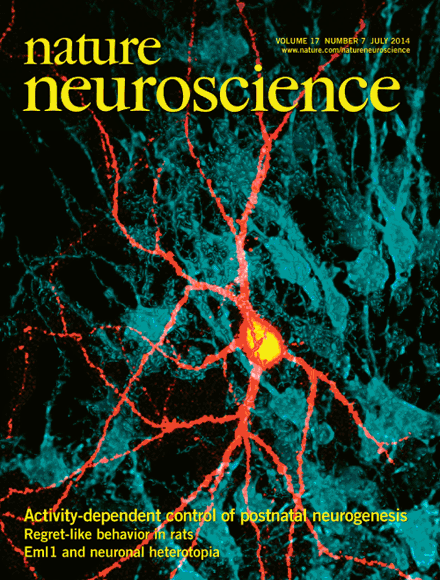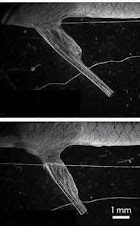Illustration
Cortex in Metallic Pastels
Greg Dunn and Brian Edwards, Greg Dunn Design, Philadelphia, Pennsylvania; Marty Saggese, Society for Neuroscience, Washington, D.C.; Tracy Bale, University of Pennsylvania, Philadelphia; Rick Huganir, Johns Hopkins University, Baltimore, Maryland
With a Ph.D. in neuroscience and a love of Asian art, it may have been inevitable that Greg Dunn would combine them to create sparse, striking illustrations of the brain. “It was a perfect synthesis of my interests,” Dunn says.
Cortex in Metallic Pastels represents a stylized section of the cerebral cortex, in which axons, dendrites, and other features create a scene reminiscent of a copse of silver birch at twilight. An accurate depiction of a slice of cerebral cortex would be a confusing mess, Dunn says, so he thins out the forest of cells, revealing the delicate branching structure of each neuron.
Dunn blows pigments across the canvas to create the neurons and highlights some of them in gold leaf and palladium, a technique he is keen to develop further.
"My eventual goal is to start an art-science lab," he says. It would bring students of art and science together to develop new artistic techniques. He is already using lithography to give each neuron in his paintings a different angle of reflectance. "As you walk around, different neurons appear and disappear, so you can pack it with information," he says.
The painting was commissioned for the Johns Hopkins University School of Medicine’s Brain Science Institute, but, Dunn says, “I want to be able to communicate with a wide swath of people.” He hopes that lay viewers will see how the branching structures of neurons mirror so many other natural structures, from river deltas to the roots of a tree. “I want to help people to appreciate the beauty of the brain.”
"It is just gorgeous," says judge Alisa Zapp Machalek. "The fact that science can be in an art museum is something we want to encourage."
Prints of Greg Dunn’s art, including this winning painting, are available at www.gregadunn.com.
Science 7 de Febrero 2014




















































































